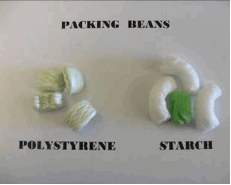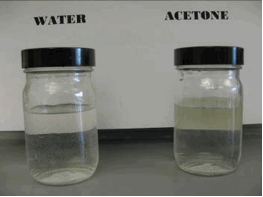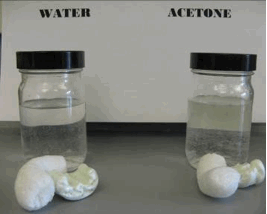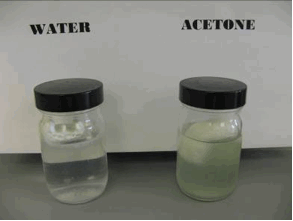Packing Bean Demonstration
Macromolecules can be made through synthesis from petroleum oil or they can be found in nature. The following activity demonstrates the chemical differences between the two types of polymers (macromolecules). Solubility differences will be observed.
Supplies needed:
- two types of packing beans: Styrofoam and starch types

- two clear glass jars with lids
- acetone (nail polish remover)
- water
Procedure:
1. Half fill one jar with acetone and label
2. Half fill one jar with water and label

3. Put a packing bean of each type in each jar

4. Close the lids tightly and shake gently
Observations:
- The Styrofoam bean dissolves in the acetone
- The starch bean dissolves in the water (this one takes a little longer to dissolve and requires a little more shaking)

While both of the packing beans have the same use in the packaging industry, the solubility differences show that they are made of very different materials. The concept of "like dissolves like" is used here. The Styrofoam bean is oil-soluble (dissolves in acetone), thus it is derived from oil and is a synthetic polymer. The starch-based bean dissolves in water, and is therefore a naturally occurring polymer. While this solubility test generally works to separate synthetic from naturally occurring polymers, there are a few exceptions. A synthetic polymer with many alcohol (-OH) or amine (-NH2) groups can be rather water-soluble. An example is polyvinyl alcohol. More detail can be provided at the high school level for this discussion about the chemical composition and solubility of macromolecules.